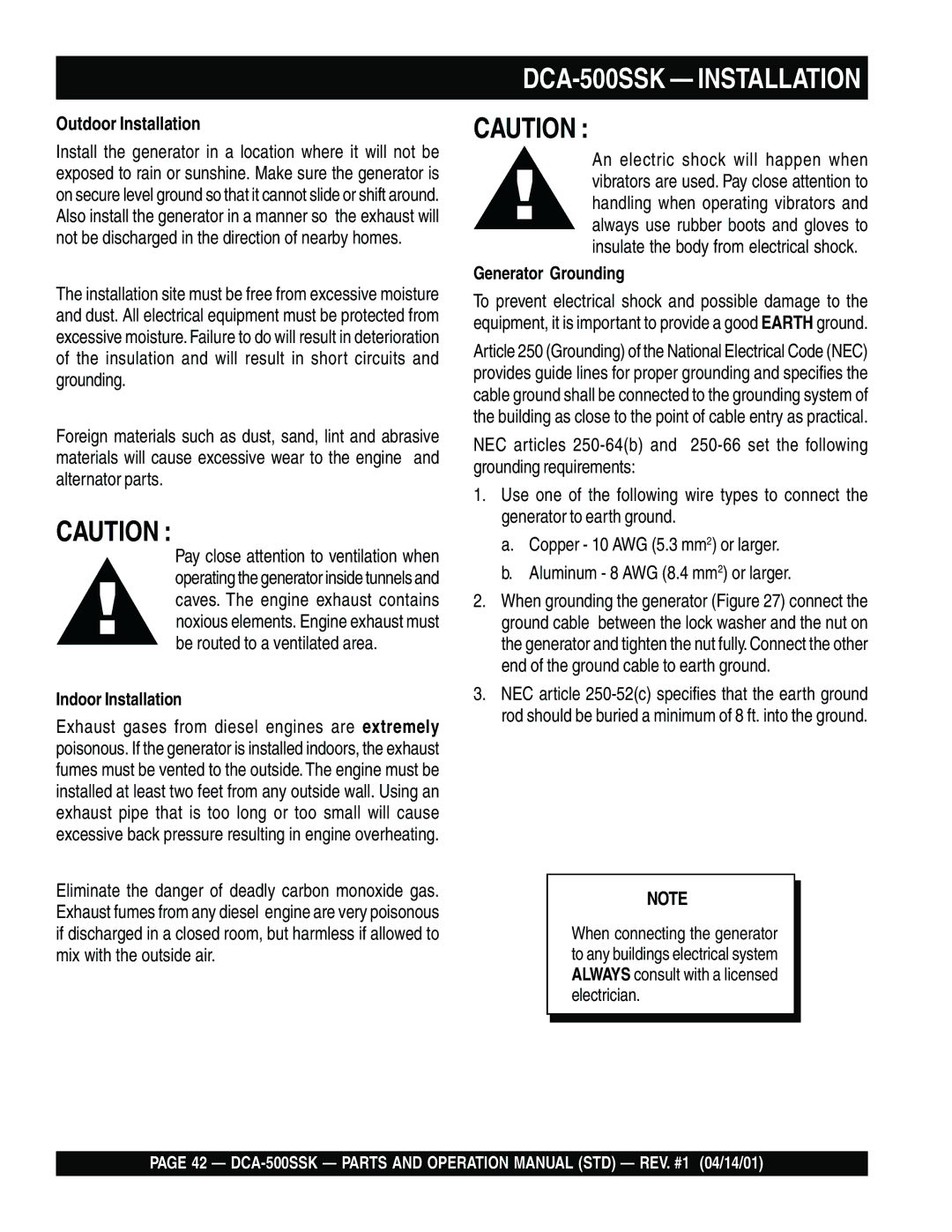
Outdoor Installation
Install the generator in a location where it will not be exposed to rain or sunshine. Make sure the generator is on secure level ground so that it cannot slide or shift around. Also install the generator in a manner so the exhaust will not be discharged in the direction of nearby homes.
The installation site must be free from excessive moisture and dust. All electrical equipment must be protected from excessive moisture. Failure to do will result in deterioration of the insulation and will result in short circuits and grounding.
Foreign materials such as dust, sand, lint and abrasive materials will cause excessive wear to the engine and alternator parts.
CAUTION :
Pay close attention to ventilation when operating the generator inside tunnels and caves. The engine exhaust contains noxious elements. Engine exhaust must be routed to a ventilated area.
Indoor Installation
Exhaust gases from diesel engines are extremely poisonous. If the generator is installed indoors, the exhaust fumes must be vented to the outside. The engine must be installed at least two feet from any outside wall. Using an exhaust pipe that is too long or too small will cause excessive back pressure resulting in engine overheating.
Eliminate the danger of deadly carbon monoxide gas. Exhaust fumes from any diesel engine are very poisonous if discharged in a closed room, but harmless if allowed to mix with the outside air.
DCA-500SSK — INSTALLATION
CAUTION :
An electric shock will happen when vibrators are used. Pay close attention to handling when operating vibrators and always use rubber boots and gloves to insulate the body from electrical shock.
Generator Grounding
To prevent electrical shock and possible damage to the equipment, it is important to provide a good EARTH ground.
Article 250 (Grounding) of the National Electrical Code (NEC) provides guide lines for proper grounding and specifies the cable ground shall be connected to the grounding system of the building as close to the point of cable entry as practical.
NEC articles
1.Use one of the following wire types to connect the generator to earth ground.
a.Copper - 10 AWG (5.3 mm2) or larger.
b.Aluminum - 8 AWG (8.4 mm2) or larger.
2.When grounding the generator (Figure 27) connect the ground cable between the lock washer and the nut on the generator and tighten the nut fully. Connect the other end of the ground cable to earth ground.
3.NEC article
NOTE
When connecting the generator to any buildings electrical system ALWAYS consult with a licensed electrician.
PAGE 42 —
